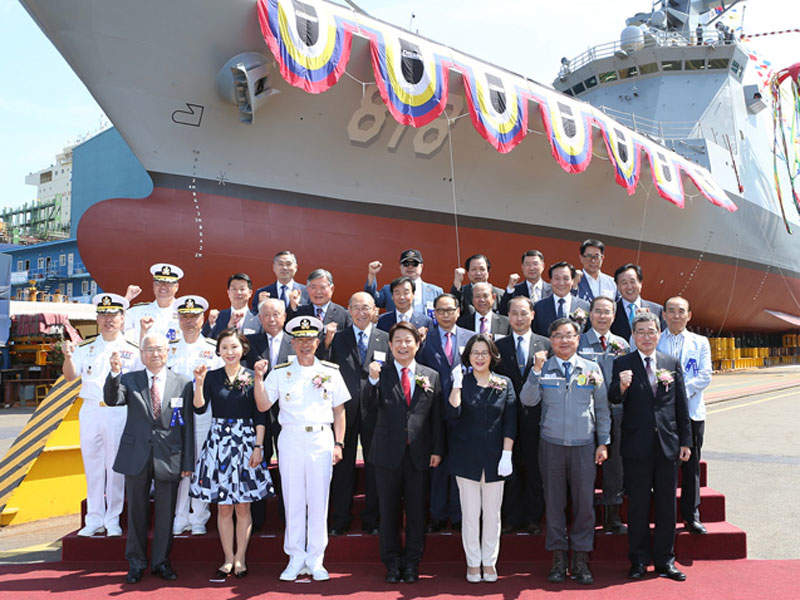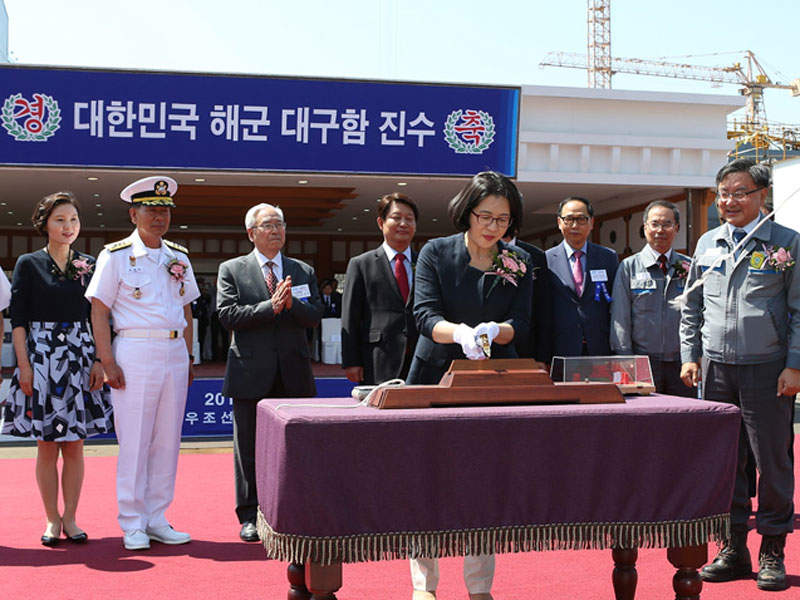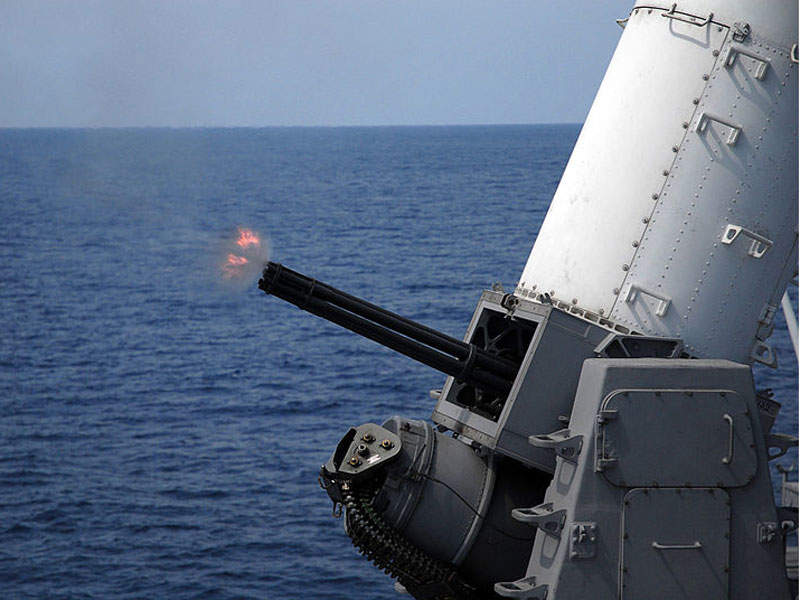The FFX-II, an improved variant of Incheon-class (FFX-I) frigates, is intended to replace the Republic of Korea (ROK) Navy’s ageing fleet of corvettes and frigates. Daewoo Shipbuilding and Marine Engineering (DSME) is building FFX batch II (FFX-II) of up to eight multi-purpose frigates.
A model of the FFX-II was unveiled in October 2013. The first frigate in the batch, designated Daegu (FFG-818), was launched at DSME’s Okpo shipyard in June 2016. All the ships in batch II are expected to be operational by 2018.
The frigates are intended for a variety of missions, including anti-submarine warfare, anti-air warfare, patrol, surveillance, search and rescue, protection of EEZ, and transport.
Details of ROK Navy’s FFX programme
The FFX (Future Frigate eXperimental) programme was launched in the early-2000s to replace the ROK Navy’s Ulsan-class frigates and Pohang-class corvettes with new frigates.
The FFX batch I included six frigates, designated Incheon-class, with a displacement of 2,300t. The first three ships (FFG-811 to 813) were built by Hyundai Heavy Industries, while the rest (FFG-815 to 817) were built by STX Offshore and Shipbuilding.
A total of 24 frigates have been planned to be built under the FFX programme.
Daegu-class frigates design and features
The Daegu-class features an enlarged hull compared to Incheon-class, while its superstructure is designed to further minimise the radar cross-section.
Each Daegu vessel has an overall length of 122m, overall beam of 14m, depth moulded of 7.4m, and draught of 4.15m. The standard and full-load displacements are 2,800t and 3,600t, respectively.
The FFX-II series frigates can accommodate up to 120 personnel and are controlled from the wheelhouse, located amidships.
The Daegu-class has an enclosed helicopter hangar with accommodation and helicopter deck on the stern to support the operation of one naval helicopter of AW159 Wildcat or Super Lynx type.
Armament of ROK Navy’s FFX-II batch frigates
Weaponry of the FFX batch II multi-role frigates include one 127mm, 62-calibre Mk 45 Mod 4 naval gun system, two 324mm triple-tube Mk-32 anti-submarine torpedo launchers, one RAM (Rolling Airframe Missile) Block 1 short-range surface-to-air missile, and two quad SSM-700K Haeseong anti-ship missile launchers.
The aft section is armed with a six-barrelled 20mm Mk-15 Phalanx Block 1B close-in weapon system (CIWS), which is produced by Raytheon to defeat anti-ship missiles, as well as air and surface threats.
The frigates are also equipped with a 16-cell K-VLS (Korean vertical launching system), which is capable of launching Cheolmae-2, medium-range, surface-to-air missiles.
Navigation and communications
The Daegu-class guided missile frigates employ fixed phased-array radar antennas mounted on top of the wheelhouse for communications.
Other on-board sensor systems include a tracking radar, SONATA SLQ-200(V)1K ship-borne electronic warfare system, LIG Nex1 SPS-550K E / F-band multi-beam 3D radar, and SQS-240 sonar.
Propulsion details
A combined diesel-electric and gas propulsion system, comprising a single gas turbine and four diesel generators, provides the Daegu-class frigates with quiet operation and increased fuel efficiency.
South Korean-based Hyosung Corporation has been contracted by DSME to provide both the hybrid electric drive (HED) propulsion system and main reduction gear.
Rolls-Royce was selected in 2012 to provide a MT30 marine gas turbine to power the FFX-II batch. The MT30 marine gas turbine, weighing 6,500kg, offers a maximum power rating between 36MW and 40MW.
Hyosung awarded a contract worth $9m to DRS Technologies’ Maritime and Combat Support Systems Group in March 2014 to design and manufacture HED permanent magnet motors and associated motor drives for the first ship-set.
The motors were developed by DRS Power Technology in partnership with Hyosung, whereas DRS Power and Control Technologies produced the drives.
The first ship-set HED system was delivered to DSME in January 2016.
Performance of the multi-mission frigates
The hybrid propulsion system provides a maximum speed of approximately 55.56km/h and a cruising range of 8,000 miles.






